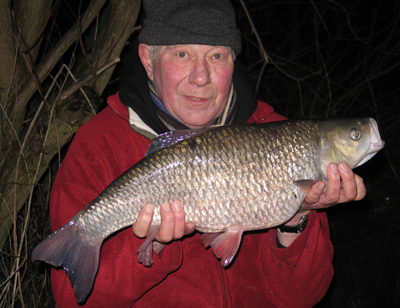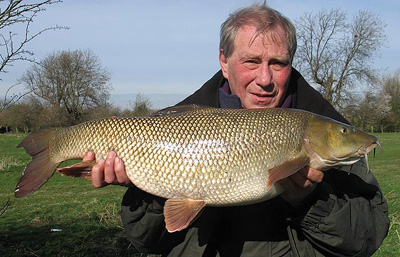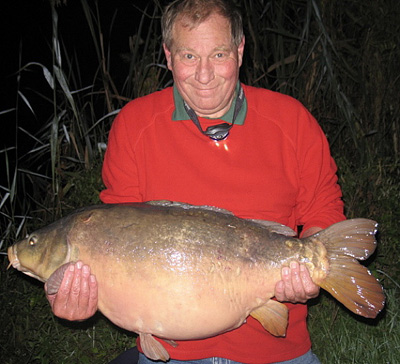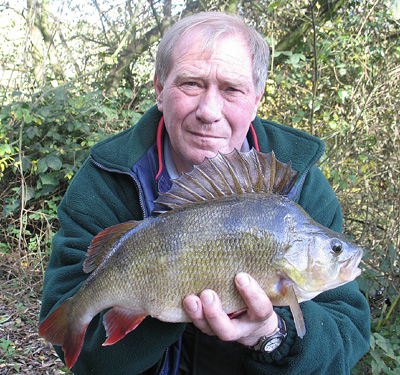When our esteemed editor asked what I was expecting from the new river season, it certainly got me thinking…
 I have fished rivers for the best part of 60 years, starting on the River Lea at Fishers Green way back in 1953 and, of course, finishing on the Lea Relief Channel at the end of the 2012 season with a monstrous chub.
I have fished rivers for the best part of 60 years, starting on the River Lea at Fishers Green way back in 1953 and, of course, finishing on the Lea Relief Channel at the end of the 2012 season with a monstrous chub.
The thing about rivers, and the reason I love fishing them, is that they are always changing, sometimes for the better and sometimes for the worse and over the years I have fished many and I have seen them all change: the Lea, Thames, Hampshire Avon, Dorset Stour, the Severn, the Trent, the Swale, Ure, Don, Weir, the Rib, the Itchen, Test, the Bean, Frome and Ouse, you name it and during the course of my angling life I have very probably fished it, all of them different, all with characters of their own. Even from day to day rivers change in their nature, you never quite know what you are going to face and that is one of the many joys of being on the rivers.
As far as my local river, the Lea, is concerned back in the 1950s and 1960s great clouds of foam could be seen rolling down it from the sewage works dotted along the length of the Lea Navigation and pollution was not uncommon. Now, fortunately, things are much better – indeed most of our major rivers are cleaner than they have ever been – but we still have outbreaks of pollution and anglers have to be on their guard in reporting any outbreaks that might occur; we are on the water more than anyone, we are the eyes and ears on the rivers, we are the guardians of our aquatic resources.
In fact I was the first to report the last serious pollution on the Lea to the EA over Easter 2006 which, I’m glad to say, is now consigned to history and the river is in a recovery phase once again.
 I have to be honest and admit that I very nearly stopped fishing the Old River Lea altogether following that last pollution, I was so heartbroken at the sight of so many dead specimen chub and barbel floating down the river, but I never gave up fishing it completely and went on to catch barbel to over 15lb – it just became so much harder, as the numbers of fish were greatly reduced.
I have to be honest and admit that I very nearly stopped fishing the Old River Lea altogether following that last pollution, I was so heartbroken at the sight of so many dead specimen chub and barbel floating down the river, but I never gave up fishing it completely and went on to catch barbel to over 15lb – it just became so much harder, as the numbers of fish were greatly reduced.
I’m lucky to be in a number of different fishing clubs along the Lea Valley, who hold the rights to various beats on the river starting on the Upper Lea where the river is little more than a brook, but still offers some excellent fishing, where I can indulge myself with the split cane rods and centrepin reels I have acquired along my 60 year angling journey.
Lower down it opens up into a slightly bigger river, where there is still a chance of a 1lb Dace or a Roach nudging the magical 2lb mark, and it’s to my centrepin, Harrison Power Float Rod and stick floats that I turn to on this section.
A little further south the river becomes the Lea Navigation where, from Ware in Hertfordshire to Bow in London – some 23 miles – it passes from a pleasant countryside river into the urban depths of London; this now includes the Olympic Park – I wonder when they will reopen that area for fishing again?
Over the years I have fished the entire length of the Lea Navigation and its side streams, much has changed, society has changed and to be honest there are areas of the Lea Navigation I would not venture onto at night. But, that said, for most of its length it perfectly safe to fish and on areas where night fishing is allowed there is little or no risk, although I do have the Lea Valley Park Guard number punched into my mobile phone just in case…
As for the fishing, it’s so varied you can change your methods and tackle as often as you like, I’m not one of the new breed which I call the ‘New Cane Cult’ of ‘traditional’ anglers but I like nothing more than using both my new and old cane rods, along with the 60 year old Trudex that I bought with my paper round money back in the 1950s.

I also like to use my touch legering skills, honed years ago at Fishers Green, when the Crayfish were not such a problem as they are now. These days baits have to be rock hard on most sections of the Navigation and its side streams or they only last a matter of minutes. So if I’m targeting big individual fish, it’s to hard boilies and pellets I turn as I know they are the only chance of my baits staying in place for any amount of time.
 Modified carp rigs, bolt lead setups and buzzers with boilies and pellets are my main methods of fishing the Lea Navigation for the huge fish it holds. There are still carp without names to be caught along its whole length – big carp – as well as the barbel, chub, bream, perch, roach, dace, and gudgeon. Last year whilst trotting for bits I had a number of brown trout and some rainbows, which added some variety to the day’s fishing.
Modified carp rigs, bolt lead setups and buzzers with boilies and pellets are my main methods of fishing the Lea Navigation for the huge fish it holds. There are still carp without names to be caught along its whole length – big carp – as well as the barbel, chub, bream, perch, roach, dace, and gudgeon. Last year whilst trotting for bits I had a number of brown trout and some rainbows, which added some variety to the day’s fishing.
Don’t get me wrong though, I’m not just a buzzer and bolt rig fishermen; I have been known to use a 16m pole to get right under the bushes along the far bank of the Navigation, where big roach and chub are known to hide away from the attentions of the cormorants.
Then there are the perch…
I have seen two outbreaks of perch disease in my lifetime, which nearly wiped out the species in this country, but now they are back, bigger than ever, and now really is the time to catch a perch of your dreams. Although I don’t really have a favourite species, perch are near to the top of my list when autumn arrives (this year it’s all autumn so far…).
I’m not going to apologise to some tree-hugging, ‘bunny lover’ for my next comment but I love livebaiting for perch, and I still think it catches more quality perch than any other method. Most of my big perch have been caught on this method, a lip-hooked bait with a small piece of red elastic band (donated by the Post Office who leave them on pavements all over Britain) to hold them on the hook with either a sunken float rig or a float paternoster rig my favourite method of presenting them.
 This coming season, however, I intend to try dropshotting for them, I really fancy the method and it’s highly successful on the Lea. You’re certainly never too old to try something new, so I have purchased the rod, the reel and the jelly lures and I just can’t wait!
This coming season, however, I intend to try dropshotting for them, I really fancy the method and it’s highly successful on the Lea. You’re certainly never too old to try something new, so I have purchased the rod, the reel and the jelly lures and I just can’t wait!
Also added to my collection of rods for the new season are a couple of new split cane models, one a very reasonable e-bay Chapman 550 copy (brand new) and another a mate has made for me out of his own home made split cane, it has a false handle, butt and top joint and is a powerful tool, ideal for the barbel on the Lea and Ivel. I have to be honest now and say I tested it out last week on a club lake, where it performed admirably with double figure common carp.
The downside to fishing my local rivers are numerous: pollution, signal crayfish, abstraction, cormorants, mitten crabs, otters, people who fish illegally…unfortunately I have seen it all on the River Lea system. I know The Angling Trust is doing its best to address some of the problems, but it needs anglers to be aware of the situation and to get in touch with the Police, local authority, angling club, commercial owners or lease holders if they see anything untoward. As I said earlier we are the eyes and ears of our waters and we have a responsibility to them.
I’m hoping I won’t have to do too much reporting this season, I’ve got quite enough to do with all of the fishing!
Tight lines for the new season.
Bob










